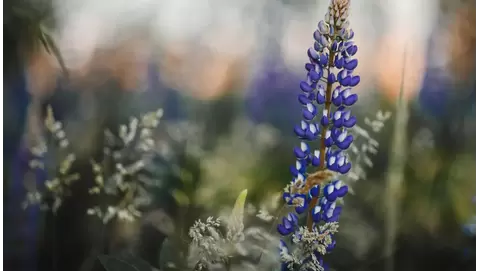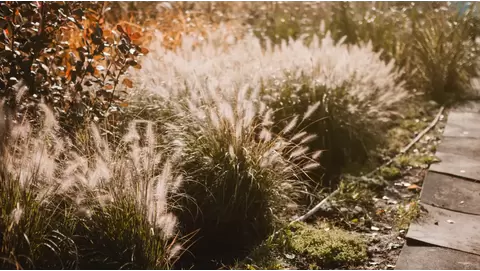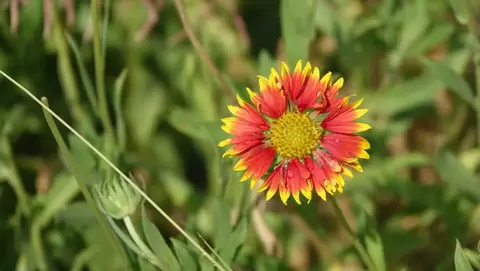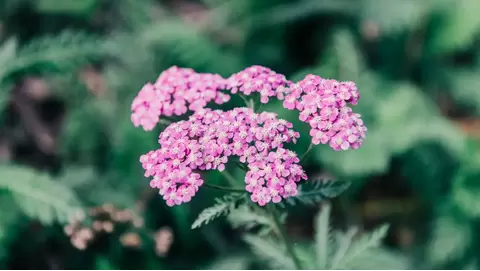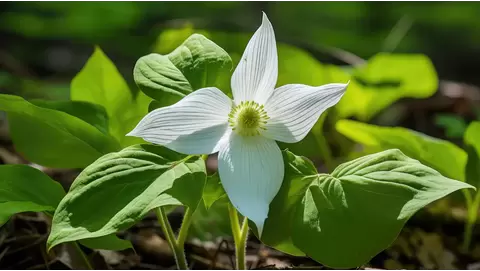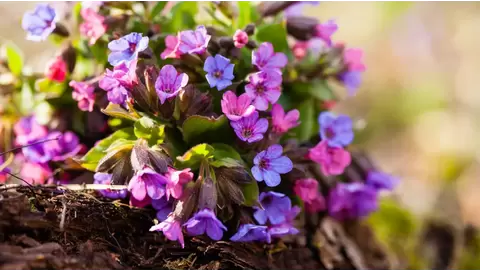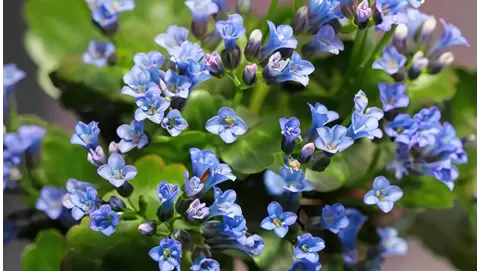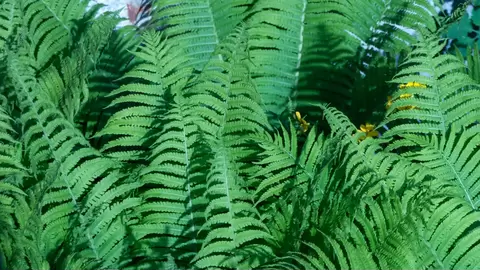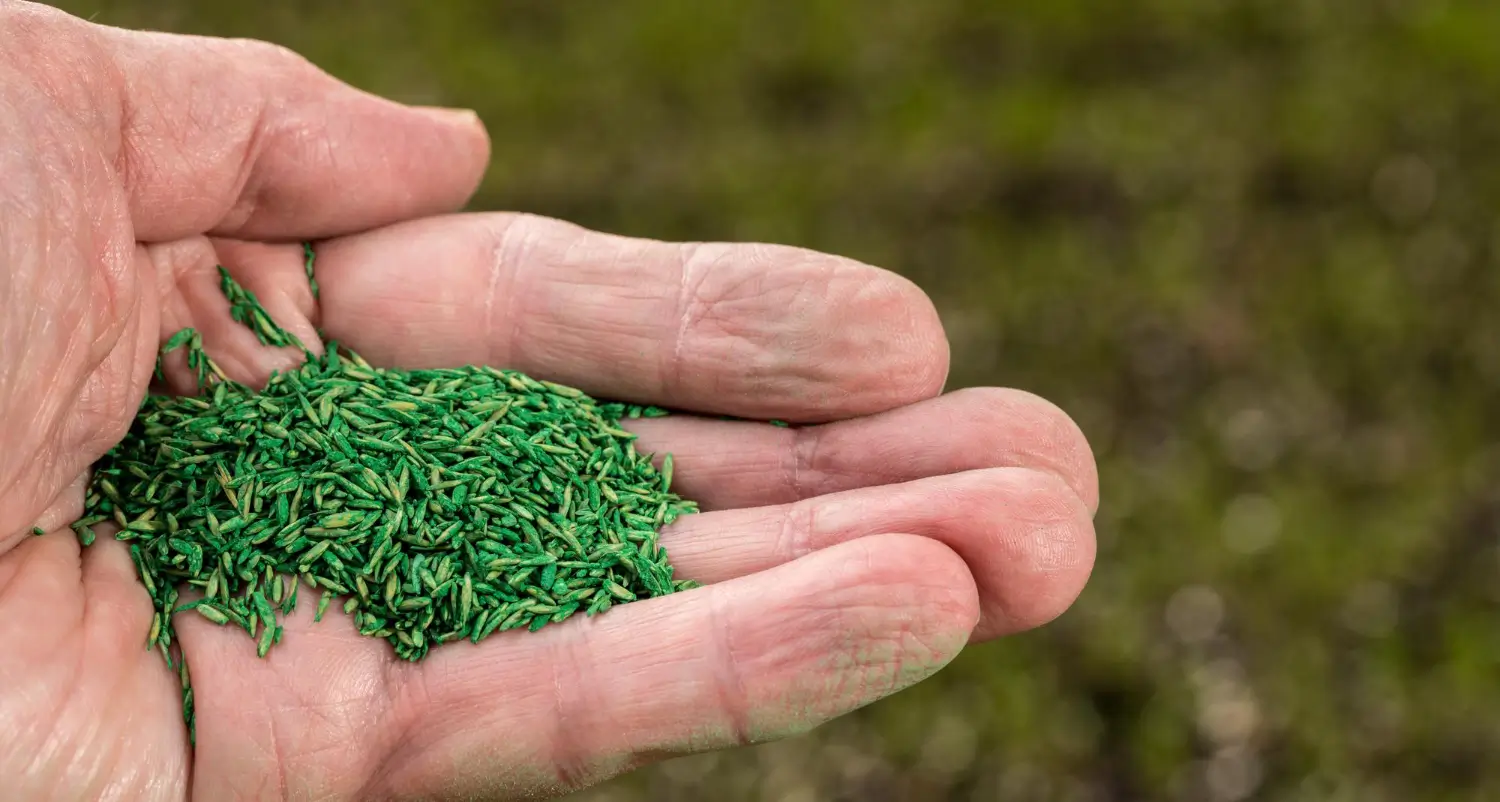
Fescue Grass Seed Guide: Choosing the Right Variety for Your Climate
Grass seeds work like magic to establish a beautiful, appealing, lush green lawn. The right grass seed not only improves the overall appearance of the lawn but also impacts how grass reacts to different climates and weather. It also determines how well the grass can handle shade and wear. Among various grass seeds, Fescue grass seeds are known for their adaptability to different climates, soil types, and foot traffic.
- What: Fescue grass is a cool-season grass with varieties suitable for various climates and soil types.
- Common Types: Tall fescue, fine fescue, and creeping red fescue, each with unique drought and shade tolerance.
- Key Benefits: Adaptable, resilient in cooler climates, and offers good shade tolerance, especially in fine fescue varieties.
- Ideal for: Lawns, parks, and areas with partial shade where a hardy, low-maintenance grass is desired.
- Maintenance: Requires moderate watering and mowing, with tall fescue needing less frequent mowing due to its clumping growth.
- Considerations: Tall fescue varieties are more heat-tolerant, while fine fescues perform best in cooler, shaded areas.
Homeowners or farmers can use Fescue grass seed to increase the efficiency of their lawns. Fescue grass seeds are one of the most magnificent grass seeds that create thick and dense turfgrass. Moreover, these seeds are known for creating a lush lawn with ornamental characteristics. Proper seeding makes the Fescue work wonders for the lawn and garden.
Growcycle offers the top fast-growing grass seeds for a lush lawn, including Fescue grass seeds, to help gardeners and homeowners get a splendid lawn. This article will highlight all the essential aspects of getting a beautiful lawn using best practices and maintaining Fescue grass seed.
What is Fescue Grass Seed?
Fescue grass seeds are the seeds of Festuca, a grass belonging to the family Poaceae. Festuca is a dense green herbaceous perennial cool-season grass ranging in height from 0.3 to 6 feet. It grows primarily in a transition zone between the United States and Canada.
Fescues are well-known for their drought and shade tolerance. This adaptability makes them a good choice for different environments. Fescues are even more appealing than turfgrass because they can stay green all year round.
Most warm-season grasses struggle to grow in the upper part of the transition zone because the weather is too cool. Similarly, most cool-season grasses do not thrive in the lower part of the transition zone, where the weather is too hot. However, Fescue grasses can adapt to these different growing conditions and often do well in areas where many other grass species cannot.
Related: 5 Main Types of Grass and How to Care for Them
Characteristics of Fescue Grass Seed
Fescue grass seed is popular among northern residents but is also suitable for places with warm and mild seasons. Here are some main characteristics of this popular grass.
- Fescue grass seed is a cool-season grass that thrives in mild summers. Due to its flexibility and adaptability to different climates, it can also thrive in transitional climates, including cold and hot temperatures.
- Fescue grass seeds grow well in the shade, making them a good choice for lawns with trees or buildings that block sunlight. Additionally, they can resist drought, making them suitable for areas with limited water.
- Fescue grass seeds require less fertilizer and mowing than other cool-season grasses. This saves farmers time and effort while maintaining a healthy and attractive lawn.
- Some Fescue grass seeds can be used for decoration and also for feeding livestock. They are very nutritious for animals. Farmers can use these seeds for both ornamental and livestock feed purposes.
Pros and Cons of Fescue Grass Seed
The genus Festuca includes about 300 types of grasses, each with various uses and benefits beyond just tolerating shade. Below are some advantages and disadvantages of Fescue grass seed.
| Pros | Cons |
|---|---|
| Highly adaptable to various climates, including cold and mid-summer. | Gets brown patches during hot and humid conditions. |
| Thrives in shaded areas, suitable for regions with limited sunlight. | May require overseeding and overwatering during summer months. |
| Has deep roots, allowing it to access water from lower soil levels, making it drought-tolerant. | Can become dormant during extreme weather, leading to a patchy appearance. |
| Durable structure, making it resistant to wear and tear. | |
| Requires minimal maintenance. | |
| Stays green year-round, providing a vibrant, evergreen appearance. |
Types of Fescue Grass Seed
Fescue grass seeds come in different types, each with its own characteristics and ability to handle various conditions. Here are some of the well-known types of Fescue grass seeds.
1. Tall Fescue Grass
Tall Fescue is one of the most famous Fescue grasses. It is a bunch-type grass with coarse blades that thrives in shady areas. Its deep root structure makes it highly resistant to drought. Because of this and its ability to withstand shade, Tall Fescue is a popular choice for home lawn seed combinations.
Additionally, it maintains its greenness throughout the year, adding visual appeal to a regular lawn. Tall Fescue can withstand a lot of foot traffic and other types of compaction and wear.
2. Fine Fescue Grass
Fine fescues are a type of Fescue characterized by narrow, tiny leaf blades that tolerate shades better than other cool-season grasses. Homeowners can grow fine Fescues on lawns with full sun to partial shade, either alone or in combination with other cool-season turfgrasses.
3. Creeping Red Fescue Grass
Creeping Red Fescue is a cool-season grass that grows well in northern, temperate climates. It has thin, dark green blades and thrives in shaded, cooler areas. People often use it with other grasses like tall Fescue, Bluegrass, and Perennial Ryegrass. Creeping Red Fescue is known for quickly establishing a lawn and is easy to maintain because it doesn’t spread aggressively.
4. Chewings Fescue Grass
Chewings Fescue grows upright rather than spreading out like Tall Fescue. It has a fine texture and thrives in shady areas. It is also drought-resistant. However, Chewings Fescue does not handle heavy foot traffic, unlike other types. It grows best in sandy, low-fertility soils and can be mowed shorter than other Fescues. Most often, it is used in grass seed mixes.
5. Hard Fescue Grass
Hard Fescue is the strongest type of Fescue grass. It can better survive drought, shade, and diseases than other grasses. This grass grows in clumps and thrives in harsh conditions and shady areas. It is most commonly found in northern regions and at higher elevations.
Hard Fescue is a type of grass that is blueish-green and stays green longer than other grasses. While it can’t be cut as short as some other types, it grows slowly and requires little maintenance. Hard Fescue is also the only type of Fescue grass that can tolerate salt.
6. Sheep Fescue Grass
Sheep Fescue grass is the least common Fescue grass used by homeowners. It increases soil quality and helps prevent erosion. It is strikingly blue-green and closely resembles hard Fescue.
Factors to Consider When Choosing Fescue Grass Seed
When selecting Fescue grass seed for the lawn or garden, several factors should be considered, such as:
Weather or Temperature
Fescue grass seeds are cool-season seeds, meaning they can thrive in cold to mild temperatures. Although Fescue grass seed is adaptable, it can become dormant in hot summers, getting brown patches. So, always look for the type that can bear heat tolerance, like tall Fescue grass seed.
Shade Level
Fescue grass seed works well in shady areas. Chewing and Red Fescue grow well in low sunlight, while tall Fescue needs moderate sunlight. Before choosing a type, check how much sunlight the lawn gets.
Lawn Requirements
Another main factor in choosing the right Fescue grass seed is assessing the lawn's requirements. Tall Fescues are better suited for high traffic lawns like family lawns or sports areas, while fine Fescues are best for low-traffic areas.
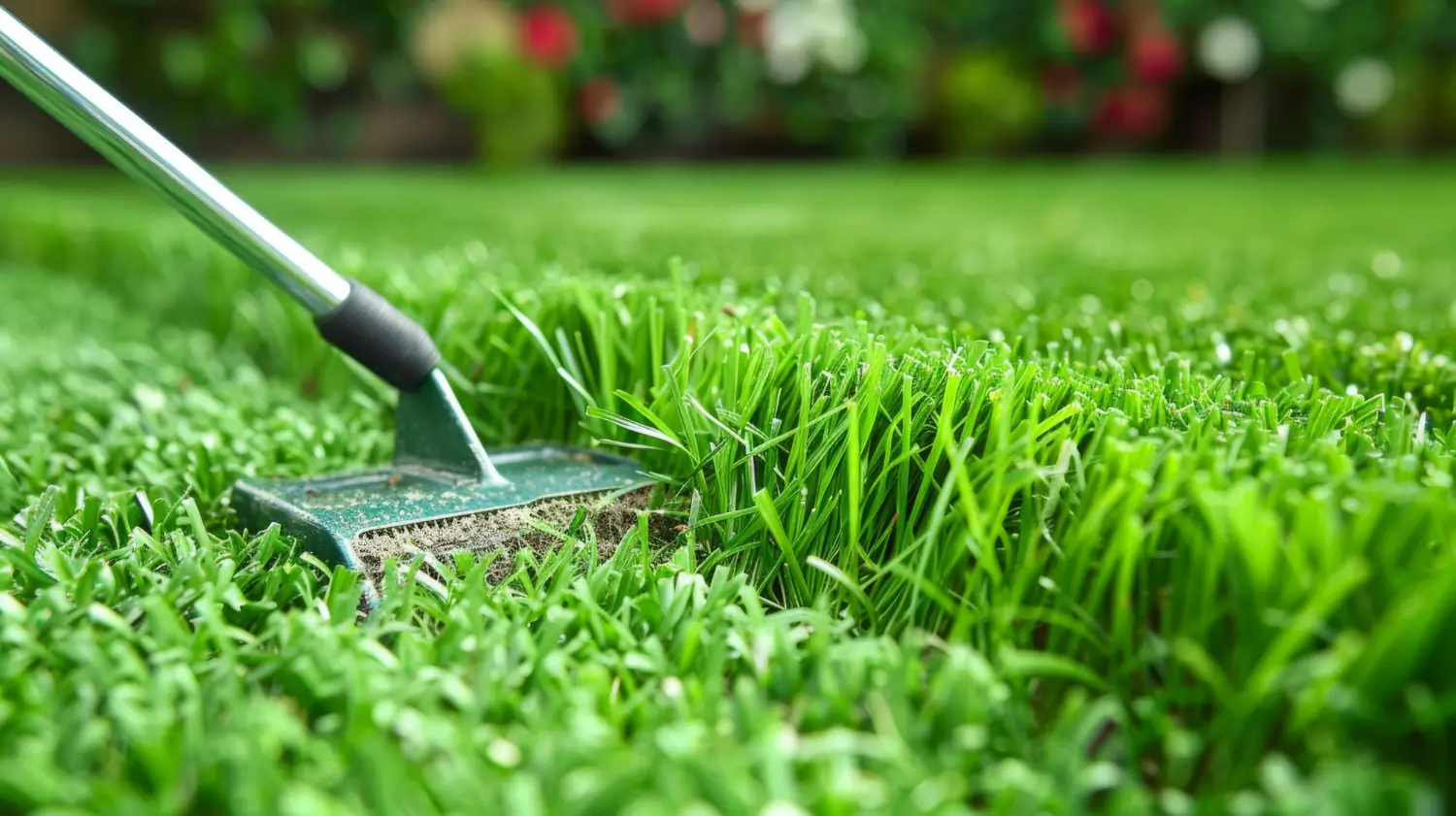
Turf Care Essentials: Choosing the Right Fertilizer and Maintenance for a Lush Lawn
Growers may select an appropriate turf grass option based on their local area. However, such green spaces require proper maintenance and nutrition, and suitable fertilizers are necessary to provide essential nutrients.
LEARN MORE →Type of Soil
Fescue grass seeds work best in soil having a pH of less than 5. Moreover, Fescue grass can thrive in well-draining soil. So, always perform a soil test before choosing the grass seed for the lawn or garden.
Water Availability
Fescue grass seeds have a moderate capacity to tolerate drought. Tall Fescue is a better choice in areas with limited water supply than other Fescues due to its high drought tolerance. Therefore, always check the water availability of the lawn or garden before choosing the right type of Fescue grass.
Top Fescue Grass Seed for Lawn
Selecting the right fescue grass seed is the first step in creating a lush lawn. Growcycle offers various fescue grass seeds, which are discussed here:
1. Crown Jewel Elite Tall Fescue Grass Seed
Crown Jewel Elite Tall Fescue Grass Seed helps homeowners and landscapers create lively, healthy, and long-lasting lawns. It offers the quality and appearance that people want, whether planting a new lawn or maintaining an existing one.
Crown Jewel Tall Fescue produces a rich emerald green lawn with consistent growth. Its steady growth and attractive look make it an excellent choice for landscaping. A key feature of this grass seed is its strong resistance to brown patch disease, which can seriously harm lawns.
Crown Jewel uses disease-resistant varieties to keep the grass healthy and vibrant, even in harsh conditions. This seed blend works well in conditions like full sun, moderate shade, and high-traffic areas. This type is known for creating lush, healthy lawns. Its ability to perform in various environments and its excellent qualities make it a great choice for both home users and professionals.
2. Titan RX Sun and Shade Tall Fescue Grass Seed
Titan Rx Sun and Shade Tall Fescue Grass Seed is designed to grow well in different environments. It features particular Titan genetics that strongly resist heat, stress, and shade. This grass seed allows homeowners to achieve a green, healthy lawn no matter the weather.
This turf-type tall Fescue grass seed is solid and durable, giving homeowners a long-lasting lawn. Its deep roots help it absorb nutrients to stay stable. This grass can grow well in all seasons and helps create a healthy lawn.
It is suitable for areas with full sun or some shade. Its flexibility makes it an excellent choice for many different situations. Lawn care experts say that Titan Rx Turf-Type Tall Fescue Grass Seed is the best choice for creating and keeping a beautiful lawn.
3. Pennington Smart Seed Pro Tall Fescue
Pennington Smart Seed Pro Tall Fescue is a high-quality blend of fine grasses, ideal for golf courses, parks, athletic fields, and residential lawns. This seed mix includes 10% Ridgeline Kentucky Bluegrass, adding flexibility and visual appeal.
Pennington smart seed mainly consists of top-quality tall turf-type fescue (TTTF) grasses. Known varieties include Rebel Xtreme, PENN RK4, and Rebel XLR. This grass type has a fine texture and is durable, growing well in harsh environmental conditions.
This grass grows slowly, so it needs mowing less often while still keeping the lawn green and healthy. It also resists common lawn diseases like Fusarium Patch, Leaf Spot, and Brown Patch. This mix is perfect for anyone looking for strong and attractive grass for their yard.
4. Lesco All Pro Transition Tall Fescue Grass Seed
Lesco All Pro Transition Grass Seed is designed to create strong, healthy grass that can grow well in harsh conditions like drought, heat, shade, and heavy foot traffic. This unique blend uses carefully chosen grass types mixed with helpful endophytes that boost the grass’s ability to resist common pests that feed on the surface.
When applied at the recommended seeding rates, the Pro Transition Grass Seed blend yields a lush, dense, and finely textured lawn that looks great and boasts excellent mowing characteristics. Each part of the Pro Transition Blend has been tested carefully to ensure strong disease resistance, making it a great choice for lawn lovers looking for high-quality grass.
Best Practices to Plant Fescue Grass Seed
Fescue grass seeds will work best if homeowners or farmers plant them accurately. A homeowner can follow a few steps to plant Fescue grass seeds efficiently.
1. Selection of Seed
A crucial part of planting a lawn is choosing the right seed. The quality of the lawn depends on how well the seed grows. Turf-type tall Fescue grass creates a high-quality, low-maintenance lawn that homeowners can be proud of. Using high-quality tall Fescue grass seeds helps the grass grow well. If some areas of the lawn get little sunlight, selecting seeds that can tolerate shade is crucial for success.
2. Application Timing
Choosing the right time to seed is important for the best results. Fescue is a cold-season grass that grows well from late summer to early October when the temperatures are cooler. The best time to plant Fescue seeds is in early spring.
The ideal soil temperature for Fescue germination is between 60 and 65 degrees Fahrenheit. Wait for the soil to cool to this range before planting in the fall. Put off spring planting until the soil has warmed up. Homeowners can also benefit from fall and spring showers by planting at these ideal times of low temperatures and robust growth.
3. Soil Examination
The health and growth of Fescue grass depend greatly on the soil and its nutrients, especially those added by fertilizer. The first step is to test the soil before planting to improve the soil and provide better nutrition for the grass.
Soil testing checks its pH, organic content, and other important factors. Homeowners should look for help from reliable soil labs to guide them on fertilizers and soil additives for a healthier lawn in the future.
4. Lawn Preparation
After testing the soil, the next step is the preparation of the lawn. The goal of early site preparation is to get rid of undesired grasses and weeds. Use a sod cutter to take out any existing grass. Rake the area to make it level and flat. Fill in any low spots where water might collect and cause drainage prob.
Moreover, fixing grading errors can make mowing easier and help ensure water flows away from the house. If the land has steep slopes, it's best to get professional help to prevent erosion and make mowing easier.
5. Seed Planting
The final and most important step is the seed plantation or sowing. To maximize the benefits of the Fescue seed, adhere to the sowing rate recommendations on the label. Quality of seed and effort is wasted when seeding is done at rates higher or lower than those recommended on labels. So, always check the manual description and soil or lawn requirements before seeding Fescue seeds.
Seed-spreading methods are also important. A drop spreader is a good option for lawns under 5,000 square feet or for precise seeding. A broadcast spreader is good for larger lawns or less accurate sowing.
6. Post-Seeding Care
Fescue grass seed requires constant moisture to germinate and establish. Proper watering is crucial for seed success. Irrigate newly sown areas periodically to keep the top 1 inch of soil moist.1 Tall Fescue seed germinates over seven to 21 days, so homeowners may need to water it many times daily.
Maintenance Strategies for a Thriving, Adaptable Lawn
Maintaining the Fescue grass is as vital as seeding. Here are some steps a homeowner must follow to keep their Fescue grass thriving:
Fertilization
Fertilization is important to provide grass with the essential nutrients. However, fescue grass should not be fertilized in the same way as warm-season grass. Homeowners should always conduct a soil test before using any fertilizer. In case of any nutrient deficiency, they can add the desired fertilizer to the grass.
Irrigation
Proper irrigation and watering are crucial for maintaining Fescue lawns. If there is any sign of water stress, such as grey color and wilted leaves, rinse the grass immediately to ward off the damage. The best time for irrigation is the early morning. Moreover, for better root development, irrigate the lawn twice a week.
Weed and Disease Control
Weed and disease control are important to maintaining the long-term health of Fescue grass. Use high-quality herbicides to control different diseases, like leaf spots. A homeowner can use broadleaf herbicides for broadleaf weeds, such as dandelion.
Regular Mowing
Regular mowing is essential to remove dead or dry Fescue grass. During the spring and fall, homeowners should mow the third part of the Fescue grass. This approach is necessary to provide heat tolerance to Fescue grass.
Overseeding
Overseeing is vital to maintaining a thick and dense Fescue lawn. Improper irrigation and seeding too late can result in turf thinning. Proper timing of seeding and overseeding in case of thin turf can sort out this problem. So, a homeowner should regularly check the damage to know the seeding requirements.
Common Mistakes to Avoid While Planting Fescue Grass Seed
The following are some common mistakes that a homeowner should avoid while seeding Fescue grass seeds.
- Improper timing of seeding can impact the seed germination rate.
- Not preparing the site and soil properly can lead to poor root development.
- Inappropriate watering can dry or overwater the Fescue grass.
- Not fertilizing the Fescue grass can result in poor nutrient supply and slower growth.
- Mowing too early or not controlling the weeds can stress or weaken the Fescue grass.
- Seeding the wrong type of Fescue grass seed and ignoring the availability of sunlight in the lawn can result in patchy growth.
FAQs
What is the best time to plant Fescue grass seed?
The best time to plant Fescue grass seed is late summer and early fall. Cold weather during these times supports vigorous growth. The second best planting time is early spring due to lower temperatures.
Where does Fescue grass grow best?
Fescue grass thrives in cooler regions, particularly well in moderate to high shade areas. It is ideal for USDA Hardiness Zones 3-7, which includes much of the northern United States and parts of the transition zone (the area between northern and southern climates).
What are the disadvantages of Fescue?
The main drawback of Fescue grass is that it can’t tolerate warm and humid environments, leading to destructive lawn diseases. Excessive heat or temperature can cause dormancy in Fescue grass, resulting in patchy growth.
The Bottom Line
Fescue grass seed is one of the best grass seeds for a lush green lawn. Homeowners and gardeners can use this seed to create a vibrant lawn in different climate conditions. From tall Fescue to sheep Fescue, this grass seed provides shade tolerance, drought resistance, and durability to lawns. However, choosing the right type and following the best practices are essential to get and maintain a healthy and lush lawn.
Growcycle sells different types of grass seeds, including fescue grass blends. These seeds help landscapers create the lawns they want. Homeowners and landscapers can purchase every kind of Fescue grass seed from their platform to achieve their desired lawn.
University of Georgia Extension: Tall Fescue for Lawns - Evaluating Endophyte Infection of Fescue Pastures in Georgia.
Penn State University Extension - Tall Fescue.
Disclaimer: This material is for informational purposes only and should not be relied on for legal, medical, financial, or any other form of professional advice.



